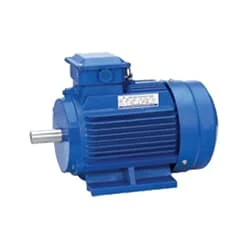Pump Motor Control Wiring:
This diagram shows how to make Pump Motor Control Wiring. In this circuit, we use a DP MCB ( Double Pole Minature Circuit Breaker ), a magnetic contactor, an overload, two flowmeters, and a single-phase motor. First, we need to connect the DP MCB, then connect the magnetic contactor, then connect the flowmeter, and the motor with the circuit.
Diagram of Motor wiring:
Components Need for this Project:
You can get the components from any of the sites below:
- DP MCB [See Buy Click Amazon]
- Flowmeter [See Buy Click Amazon]
- Contactor [See Buy Click Amazon]
- Overload [See Buy Click Amazon]
- Single phase Motor [See Buy Click Amazon]
Read Also:
Components used to make the Pump Motor control wiring:
01. DP MCB
 |
| Fig 2: DP MCB |
Double pole MCB can control two wires. This circuit breaker is generally used in single-phase electric lines. Double pole MCB circuit breaker input has two wires supply two wires and an output. In a single-phase line, A double-pole MCB circuit breaker is used to give good production. This circuit breaker is provided through phase and neutral circuit breaker, it is very safe. This circuit breaker is preferred for home appliances. A DP MCB usually trips for 2 reasons 1. Overload 2. Short circuit.
02. Flowmeter
 |
| Fig 3: Flowmeter |
A flow meter is a flow rate measuring device used to determine the linear or nonlinear mass and volumetric flow of a liquid or water. The many names of flow meters include flow water, flow indicator, liquid meter, and flow rate sensor. which can be an open channel or closed conduit. An open channel is when the flow is open to the atmosphere. whereas a closed conduit is when the flow is in a tube or pipe.
03. Contactor
 |
| Fig 4: Contactor |
A magnetic contactor is an electrical device used for load control, automation, and protection. It is much like a magnetic reel. However, relays are generally used for low power and voltage, on the other hand, when we think of high power, these heavy-duty contractors only come to mind. It basically works by switching the load on and off. It has 3 terminals whose inputs are denoted as L1, L2, L3, and outputs as T1, T2, and T3. The circuit of the load is made in automation mode or protection using auxiliary contacts. It has two types of terminals. 1) Normally Open (NO). 2) Normally Closed (NC)
04. Overload
 |
| Fig 5: Overload |
Overload relays are often used to protect the motor from excessive current flow. Overload relays are used to protect the motor from overheating. Besides some specific faults such as phase to phase, phase to ground, etc. overload relay provides protection to the motor. A thermal overload relay works on the principle of bimetallic strip electro-thermal characteristics. When the bimetallic heats up, the trip function in the overload relay turns on and disconnects the power supply to the contactor coil, thus tripping the overload relay and breaking the motor current and saving the motor.
05. Single Phase Motor
 |
| Fig 6: Single Phase Motor |
Single-Phase Induction Motor is Very Simple in Construction, Economical, Reliable, and Easy to Repair And Maintain. Due to all these advantages, it is widely used in vacuum cleaners, fans, centrifugal pumps, blowers, washing machines, etc. It can run only by supplying 1 phase current through this motor. The main two parts of this motor are Rotor and Stator. Among them, the rotating part is the Rotor and the stationary part is the Stator. Like all induction motors, a single-phase induction motor consists of two main parts, the stator, and the rotor.
Thank You for visiting the website. Keep visiting for more Updates.


Post a Comment
Do leave your comments